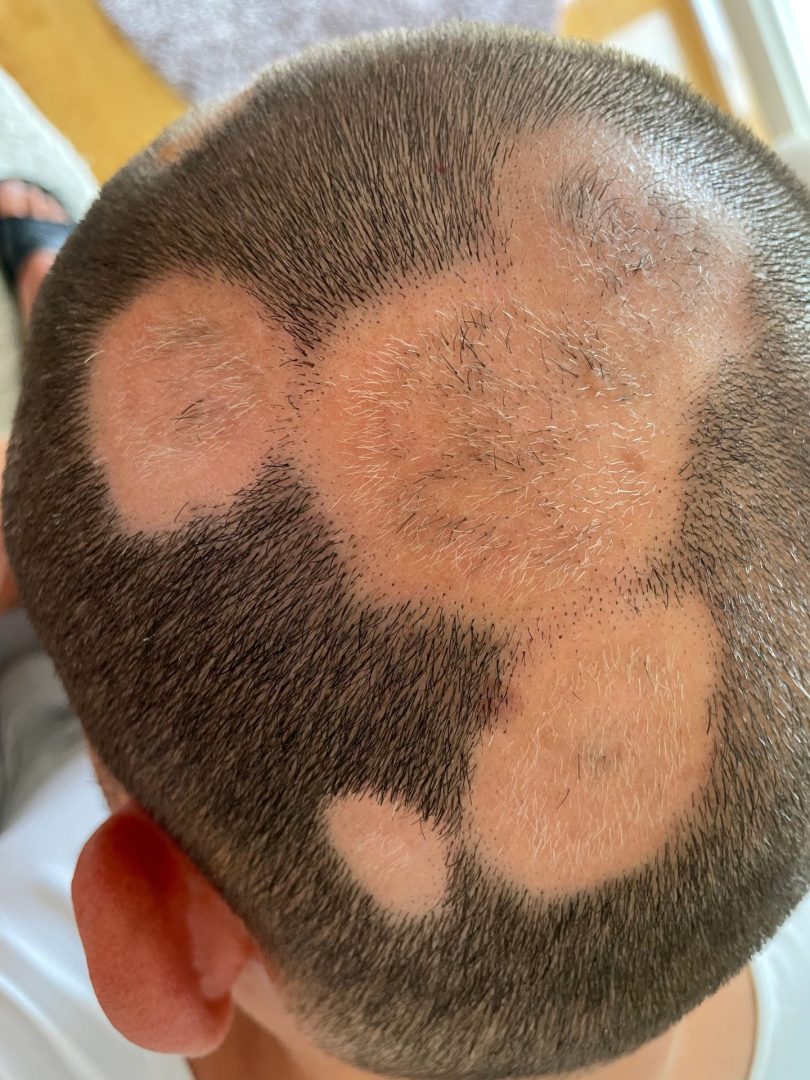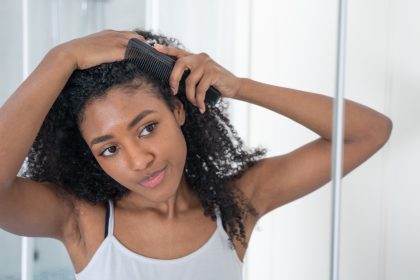Waking up to find clumps of hair on your pillow or discovering smooth, round patches where thick hair once grew can be absolutely devastating. This jarring experience affects millions of people worldwide, yet the condition behind it remains shrouded in misconceptions and silence. The reality of alopecia areata extends far beyond simple hair loss, touching every aspect of a person’s emotional and physical well-being.
This autoimmune condition doesn’t discriminate based on age, gender, or lifestyle. It can strike anyone at any time, turning confident individuals into people who avoid mirrors and social situations. The unpredictable nature of this condition creates a rollercoaster of emotions that can be just as challenging to navigate as the physical symptoms themselves.
Understanding what really happens when your immune system turns against your hair follicles can empower you to take control of your situation. Armed with the right knowledge and strategies, many people discover that this challenging journey can lead to unexpected strength, resilience, and even renewed self-confidence.
The hidden reality of what alopecia areata really does to your body
Most people think alopecia areata simply causes hair to fall out, but the reality is far more complex. This autoimmune condition occurs when your body’s defense system mistakenly identifies hair follicles as foreign invaders, launching an attack that disrupts the entire hair growth cycle. The inflammation that results doesn’t just stop hair growth—it can completely alter the follicle’s ability to produce healthy hair in the future.
The condition manifests differently in every person, making it impossible to predict who will experience mild patchy loss versus complete baldness. Some people notice their first patch and never develop another, while others watch helplessly as new spots appear weekly. This unpredictability creates a constant state of anxiety that can become more debilitating than the hair loss itself.
What many don’t realize is that alopecia areata often affects more than just scalp hair. Eyebrows, eyelashes, and body hair can all disappear, fundamentally changing how a person looks and feels. The psychological impact of losing facial hair, particularly eyebrows and eyelashes, can be even more traumatic than scalp hair loss because these features are harder to conceal.
The stress connection that changes everything
- Stress doesn’t just trigger hair loss—it creates a vicious cycle – While emotional trauma or chronic stress often precedes the first episode of alopecia areata, the hair loss itself becomes a major stressor. This creates a destructive feedback loop where stress causes hair loss, which causes more stress, which triggers additional hair loss. Breaking this cycle becomes crucial for both mental health and potential regrowth.
The physiological impact of stress on the immune system is profound. Elevated cortisol levels from chronic stress can suppress immune function in some areas while overactivating it in others. This imbalance creates the perfect storm for autoimmune conditions like alopecia areata to develop or worsen.
Understanding this connection empowers people to prioritize stress management not as a luxury, but as a medical necessity. Simple daily practices like deep breathing exercises, meditation, or even a 10-minute walk can have measurable impacts on stress hormone levels and immune function.
Physical symptoms that extend beyond hair loss
- Your scalp becomes hypersensitive in ways that surprise everyone – Before hair loss becomes visible, many people experience strange sensations in affected areas. Tingling, burning, or itching often precedes hair loss by days or weeks. These sensations can be so intense that they interfere with sleep and daily activities.
The skin in affected areas may become tender to touch, making normal activities like brushing hair or lying on a pillow uncomfortable. Some people describe feeling like their scalp is “crawling” or experiencing electric-like sensations. These symptoms often intensify during periods of stress or illness.
Even after hair loss occurs, the affected skin may remain sensitive for months. This hypersensitivity can make wearing wigs, hats, or even applying topical treatments challenging, creating additional barriers to managing the condition effectively.
The nail connection nobody expects
- Your fingernails reveal secrets about your immune system – Up to 66% of people with alopecia areata develop nail changes that most people never connect to their hair loss. These changes can include small pits or dents in the nail surface, ridges running lengthwise, or even complete nail loss in severe cases.
Nail changes often appear before hair loss becomes noticeable, potentially serving as an early warning system for those who know what to look for. The same immune system dysfunction attacking hair follicles also targets the nail matrix, the area where new nail cells are produced.
These nail changes can be particularly distressing because they’re visible to others and difficult to conceal. However, they also provide valuable information about disease activity and can help track whether treatments are working effectively.
The scalp care revolution that actually works
- Gentle care becomes your secret weapon – Traditional hair care advice often proves counterproductive for people with alopecia areata. Harsh shampoos, frequent washing, and vigorous brushing can increase inflammation and potentially worsen hair loss. The key lies in treating your scalp like wounded skin that needs time and gentleness to heal.
Fragrance-free, gentle cleansers become essential tools rather than luxury items. Many people discover that washing hair less frequently—perhaps every other day or even twice weekly—allows the scalp to maintain its natural protective oils while reducing irritation.
Heat styling becomes the enemy of recovering hair follicles. Air-drying whenever possible and using the lowest heat settings when styling tools are necessary can prevent additional damage to already compromised follicles. This shift often requires learning new styling techniques and adjusting expectations about daily appearance.
Sun protection for the scalp becomes crucial, especially in areas of active hair loss. Exposed scalp skin burns easily and can develop painful blistering that interferes with treatment application. Wide-brimmed hats or specialized scalp sunscreens become daily necessities rather than occasional accessories.
Nutrition as medicine for your hair follicles
- Your diet becomes a powerful treatment tool – While no specific diet can cure alopecia areata, nutritional deficiencies can worsen the condition and slow potential regrowth. The immune system requires specific nutrients to function properly, and deficiencies in key areas can tip the balance toward increased autoimmune activity.
Protein intake becomes critical because hair is primarily composed of keratin, a protein that requires adequate amino acid supplies for production. Many people unknowingly consume insufficient protein, particularly if they’re following restrictive diets or dealing with stress-related appetite changes.
Zinc deficiency commonly accompanies alopecia areata, though it’s unclear whether the deficiency contributes to the condition or results from it. Foods rich in zinc—including oysters, beef, lentils, and pumpkin seeds—become dietary priorities rather than occasional treats.
Vitamin D levels deserve special attention because this nutrient plays crucial roles in immune system regulation and hair follicle cycling. Many people with alopecia areata have lower vitamin D levels than healthy individuals, making supplementation potentially beneficial under medical supervision.
Iron deficiency, particularly in women, can compound hair loss issues and slow regrowth even when other treatments are working. Regular monitoring of iron levels and addressing deficiencies through diet or supplements can make a significant difference in treatment outcomes.
Medical treatments that change the game
- Modern medicine offers hope in unexpected ways – Treatment options have expanded dramatically in recent years, offering new hope for people who previously had limited options. Steroid injections directly into affected areas can jump-start regrowth in many cases, though the process requires patience and realistic expectations.
Topical treatments have evolved beyond basic steroid creams to include newer formulations that target different aspects of the immune response. Some people respond better to one type of treatment than another, making it important to work with knowledgeable healthcare providers who understand the nuances of different approaches.
Phototherapy using specific wavelengths of ultraviolet light can suppress the immune response in affected areas while stimulating hair follicle activity. This treatment requires specialized equipment and careful monitoring but offers an alternative for people who can’t tolerate other treatments.
Contact immunotherapy involves applying chemicals that cause controlled allergic reactions, essentially distracting the immune system from attacking hair follicles. While this sounds counterintuitive, it can be remarkably effective for people with extensive hair loss who haven’t responded to other treatments.
JAK inhibitors represent the newest frontier in alopecia areata treatment. These medications block specific enzymes involved in the immune response, potentially stopping the attack on hair follicles while allowing regrowth to occur. Early results have been promising, though long-term effects are still being studied.
The emotional journey that transforms lives
Living with alopecia areata forces people to confront their relationships with appearance, self-worth, and identity in profound ways. The initial shock and grief are real and valid, often resembling the stages of mourning as people process the loss of their former appearance and the uncertainty of their future.
Many people discover inner strength they never knew they possessed as they navigate this challenge. The process of learning to advocate for themselves in medical settings, educating others about their condition, and finding new ways to feel confident can lead to personal growth that extends far beyond hair loss.
Support communities become lifelines for many people, providing practical advice, emotional support, and proof that fulfilling lives are possible regardless of hair status. These connections often become some of the most meaningful relationships in a person’s life.
Building confidence beyond hair
The journey with alopecia areata often leads to a fundamental shift in how people define beauty and self-worth. Many discover that their worth was never dependent on their hair, though this realization may take time and effort to fully embrace.
Learning to style remaining hair creatively, experimenting with scarves and head coverings, or embracing baldness entirely becomes an opportunity for self-expression rather than a limitation. Some people find that their post-diagnosis style becomes more authentically them than anything they wore before.
The experience often deepens empathy and compassion, both for themselves and others facing challenges. Many people report that going through alopecia areata made them better friends, partners, and advocates for others facing difficulties.
Long-term outlook and hope
While alopecia areata can be unpredictable, many people do experience regrowth, sometimes years after initial hair loss. Even when complete regrowth doesn’t occur, most people find ways to live fulfilling, confident lives while managing their condition.
The key to long-term success lies in developing a comprehensive approach that addresses both physical symptoms and emotional well-being. This might include ongoing medical treatment, stress management techniques, nutritional support, and strong social connections.
Research continues to advance understanding of alopecia areata, with new treatments being developed and tested regularly. The future holds promise for even more effective interventions that could prevent hair loss or promote more reliable regrowth.
Your journey with alopecia areata is uniquely yours, but you don’t have to navigate it alone. With the right knowledge, support, and treatment approach, it’s possible to reclaim your confidence and build a life that feels authentic and fulfilling, regardless of what your hair decides to do.
















